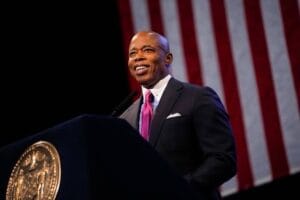Inflation hits three-year low, paving way for fed’s first rate cut since 2020
Inflation in the U.S. has dropped to its lowest point in three years, fueling widespread expectations that the Federal Reserve is poised to begin cutting interest rates as early as next week.

Inflation in the U.S. has dropped to its lowest point in three years, fueling widespread expectations that the Federal Reserve is poised to begin cutting interest rates as early as next week.
Prices rose 2.5% in the 12 months ending in August, down from 2.9% in July, largely due to falling gasoline prices, according to new data from the Bureau of Labor Statistics.
The cooling inflation, driven by easing energy and food costs, signals a potential end to the Fed’s aggressive rate hikes that began in 2022 to combat the highest inflation in decades. Core inflation, which excludes volatile food and energy prices, remained unchanged at 3.2%, with housing costs continuing to make up more than 70% of the overall year-over-year increase.
Federal Reserve Chair Jerome Powell recently hinted that the time for rate cuts has arrived. “The time has come,” Powell said in a speech last month, solidifying expectations for a move at the Fed’s policy-setting meeting on September 17-18. While the size of the initial cut remains uncertain, analysts anticipate a reduction of either a quarter or half a percentage point, with further cuts expected later this year and into 2025.
Paul Ashworth, Chief North America Economist at Capital Economics, noted that while inflation has slowed, the Fed is likely to take a cautious approach. “Overall, inflation appears to have been successfully tamed but, with housing inflation still refusing to moderate as quickly as hoped, it hasn’t been completely vanquished. Under those circumstances, we expect the Fed to take a measured approach to cutting interest rates,” Ashworth stated in a research note.
Gasoline prices, which have been a key driver of inflationary pressure, fell significantly in August, and falling oil prices suggest that further declines at the pump could be on the horizon. Meanwhile, food prices eased, and used vehicle prices dipped, offering further relief to consumers.
Inflation peaked at 9.1% in June 2022, marking a 40-year high as the U.S. economy roared back from the pandemic-induced recession. Since then, the labor market has cooled, with slower hiring and more moderate wage increases contributing to a gradual slowdown in inflation. Economists are increasingly optimistic that the U.S. is headed for a “soft landing,” in which inflation is controlled without triggering a full-blown recession.
As traders adjust their expectations for the Fed’s next move, bets have shifted toward a more gradual pace of policy easing. The upcoming rate cuts would mark the first time the central bank has lowered interest rates since the pandemic began in 2020, signaling a significant shift in monetary policy after more than a year of fighting inflation with steep rate hikes.










